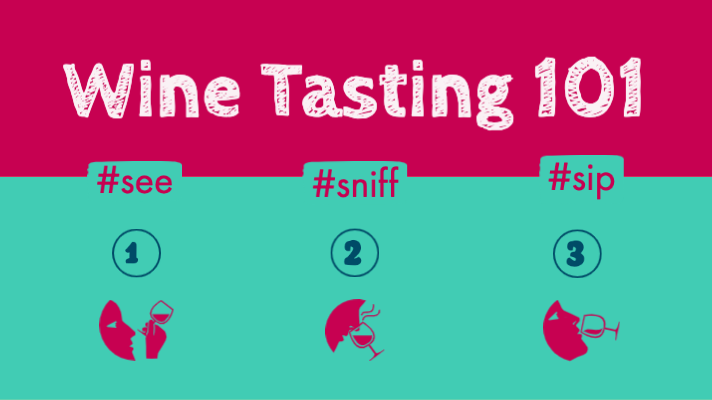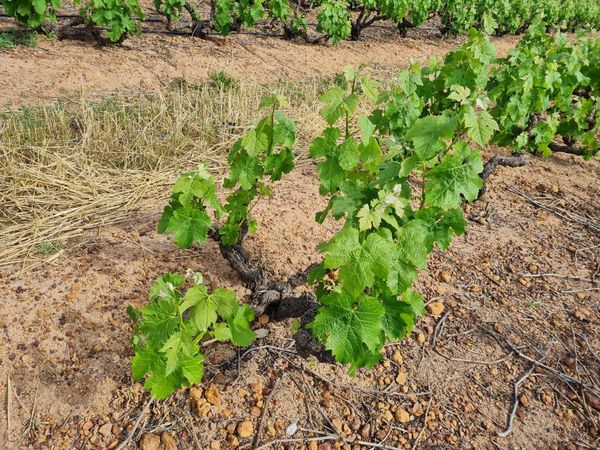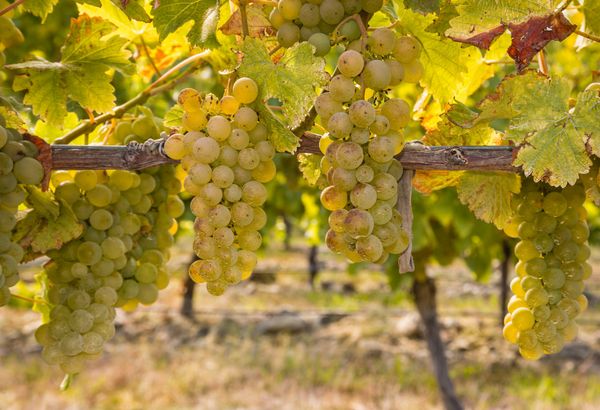Day 6 — Wine Tasting 101
If you have been brushing up on your wine knowledge and learning a bit more about wine appreciation in the past couple of days, it might be a good idea to start working on your tasting skills.
Virtual wine tastings are popping up all over the internet, and it is a fun activity to do with family and friends while we’re still in lockdown. You can also organise a wine tasting evening at home as soon as the lockdown has been lifted. There are great guides and printouts available online to help you set up something like this.
If you are keen to start an amateur wine tasting group or start hosting tasting parties (all of this should be post-lockdown, of course) it is important to make clear and informative tasting notes. These are also useful to help you to communicate what your wine is like, even after some time has passed since you’ve tasted it.
Now, what are the steps to wine tasting and writing clear tasting notes? It is simple really! I call it the Triple S — see, sniff and sip.
But, before we get into this, there are a couple of things you need to do to ensure that your environment is conducive to great wine tasting.
You need:
- good lighting
- no odours that can interfere with wine aromas
- spittoons (if you’re really serious about it!)
- some paper or a notebook to make notes
- colourless, odourless, clean glasses
You should:
- have a clean palate (no lingering garlic or toothpaste flavours)
- not be wearing strong perfume or aftershave
- HAVE FUN!
Step 1 — See

Hold your glass at a 45° angle against a white background to properly asses the colour of the wine in your glass. Make a note of what you see. Different colours are used to describe wines, but for a start you can use the following colours to describe wines:
- White wine: lemon, gold, amber
- Red wine: purple, ruby, garnet, tawny
- Rosé wine: pink, pink-orange, orange
You should also note the intensity of the colour that you see — pale, medium or deep.
Wine Folly has a very informative colour chart that you can use as reference.
Step 2 — Sniff

Now that you have noted what colour the wine in your glass is, you can place your nose on the rim of the glass and take a sniff. What do you smell?
Wine aromas fall into three general categories:
- Primary
- Secondary
- Tertiary
Primary aromas refer to aromas that come from the terroir (refers to the set of all environmental factors that have an impact on the grape’s growth), the fermentation process and the grape itself. Simple wines may exhibited only a few primary aromas, often times in the same group or cluster (i.e. stone fruit, green fruit, red fruit) whereas more complex wines will display more varied aromas from a larger number of clusters. It is important to note that most wines will have fruit aromas, but you should take note of the other clusters, such as floral, herbal or spice.
Secondary aromas are those that are created after fermentation. These aromas come from oak, malolactic conversion as well as yeast. Notable aromas that are present due to oak maturation are vanilla, cloves, coconut, smoke, chocolate, coffee, etc. Aromas created by malolactic conversion include butter, cream and cheese. Lastly, yeast is responsible for aromas that can include biscuits, pastry, bread dough, toasted bread and the likes. Secondary aromas are not always present in wine as some wines never go through any processes after fermentation (examples could include unoaked Chardonnay, Sauvignon Blanc).
Tertiary aromas are only present in older wines as these form during ageing, either in oak barrels or in the bottle. Red wines often display aromas of leather, dried fruit, earth, mushroom, meat, among others if they have been aged well. Well-aged white wines could display aromas of marmalade, petrol (gasoline), ginger, nutmeg, almonds, honey, etc.
Sniffing and identifying aromas and flavours in wine really does take a lot of practice! It is important to make notes of everything that you think you smell (even smelly socks) in order for you to build up a larger flavour vocabulary and to better remember different smells.
Step 3 — Sip

Finally we get to the important part of tasting wine. Drinking your wine!
When the wine is in your mouth, you should try to swirl it around for a bit to make sure that the liquid covers every part of your mouth — this will help you to better identify the flavours that are present in your wine.
Apart from trying to taste the flavours that you were able to smell in your wine, there are a couple of other things that you can take note of.
The sweetness of your wine. Does the wine taste sweet or not? Note that we say that a wine is either sweet or dry. You can use the words sweet, medium, off-dry and dry to describe the sweetness of your wine.
The acidity of the wine. All wines contain acid, and even wines with low acidity will have a noticeable acidity in your mouth. Something to remember is that the more acidic a wine is, the more your mouth will water after you took a sip. Does your wine have low, medium or high acidity?
The next thing you should try to identify (in red wines) are the level of tannins that are present. If your mouth feels very dry after a sip of wine, you can know that there are a lot of tannins in the wine.
Alcohol contributes to the body of a wine. Higher alcohol levels can make a wine feel heavier in your mouth.
Have you noticed how some wines can feel heavy in your mouth whereas other wines feel lighter? The heavy feeling is what one can describe as the body of your wine. For most wines alcohol is the main factor contributing to the body of the wine. Generally speaking a wine with more tannins and higher levels of alcohol will be described as a full-bodied wine. Light-bodied wines could have higher acidity, lower sugar and low tannins.
Along with all of the above, you should also make a note of which flavours you can identify. Were you able to identify most or all of the flavours that you smelled in your wine? Are there additional flavours that you can now identify?
The last thing we should make a note of is how long the pleasant flavours stay in your mouth. This refers to the finish of a wine. A wine can have a long, medium or short finish.
And that is that! Three steps to follow the next time you have a glass of wine! Happy tasting!
Follow The Wine Dream on Instagram for more photos and tasting notes.




